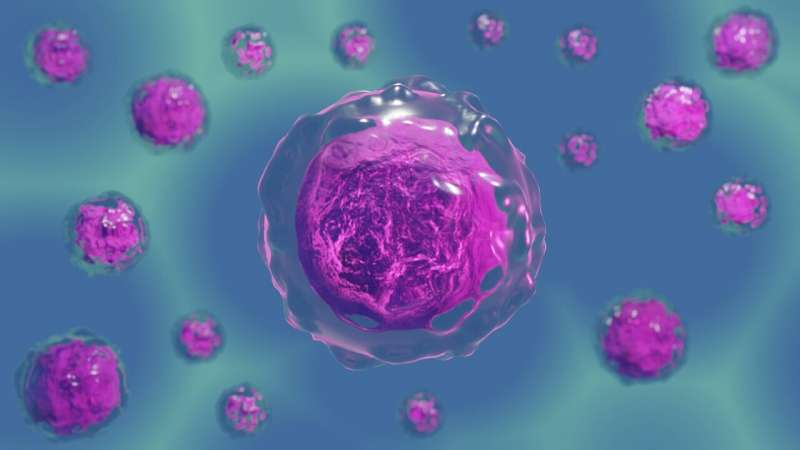Researchers reveal molecular mechanism behind pigment production in skin cells

The pigments that create skin, hair, and eye color are produced in organelles called melanosomes, which are located within skin cells called melanocytes and several types of eye pigment cells. Albinism, a condition characterized by an absence of pigment in the skin, hair and eyes, occurs when mutations within genes responsible for melanosome function or supporting cellular machinery prevent melanin pigments from being synthesized and stored.
Albinism is one of many symptoms of the Hermansky–Pudlak syndromes (HPS), a group of inherited multisystem disorders that also can lead to symptoms such as prolonged bleeding, colitis, and lung fibrosis. Previous research has shown that patients with HPS have abnormalities in the formation of cell type-specific lysosome-related organelles such as melanosomes. However, the mechanisms behind melanosome formation—and how HPS-related genes might impact them—are not fully understood.
To better understand the mechanisms at play, researchers at Children's Hospital of Philadelphia (CHOP) focused on BLOC-1, a protein complex required for the biogenesis and maturation of melanosomes and other lysosome-related organelles.
BLOC-1 is composed of eight subunits, four of which are mutated in various forms of HPS, and is required to develop intracellular membrane tubes that allow melanin synthetic enzymes to be delivered to melanosomes. The researchers identified two lipid-modifying enzymes that are required for BLOC-1-dependent tube formation and thus for transporting melanin synthetic enzymes and other proteins into the melanosomes to generate pigment. The researchers found that these enzymes functioned sequentially and that depleting either enzyme resulted in reduced melanin content, emphasizing that both are required.
"This study showed us the 'what'—that two kinases are essential in melanosome biogenesis, and that these kinases localize sequentially," said senior study author Michael S. Marks, Ph.D., Investigator and Professor of Pathology and Laboratory Medicine at Children's Hospital of Philadelphia.
"The next step of this research will be figuring out how and why these enzymes are targeted to two different sites, which could help us better understand dysfunction of other lysosome-related organelles that are relevant in HPS. This work also gives us a tool to help us better understand the three-dimensional structure of BLOC-1, which could lead to a greater understanding of these mechanisms."
The study was recently published in the Journal of Cell Biology.
More information: Yueyao Zhu et al, Type II phosphatidylinositol 4-kinases function sequentially in cargo delivery from early endosomes to melanosomes, Journal of Cell Biology (2022). DOI: 10.1083/jcb.202110114
Journal information: Journal of Cell Biology
Provided by Children's Hospital of Philadelphia





















